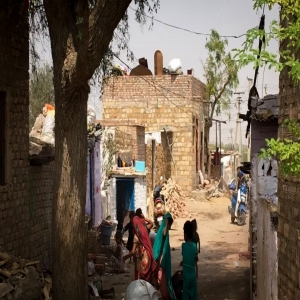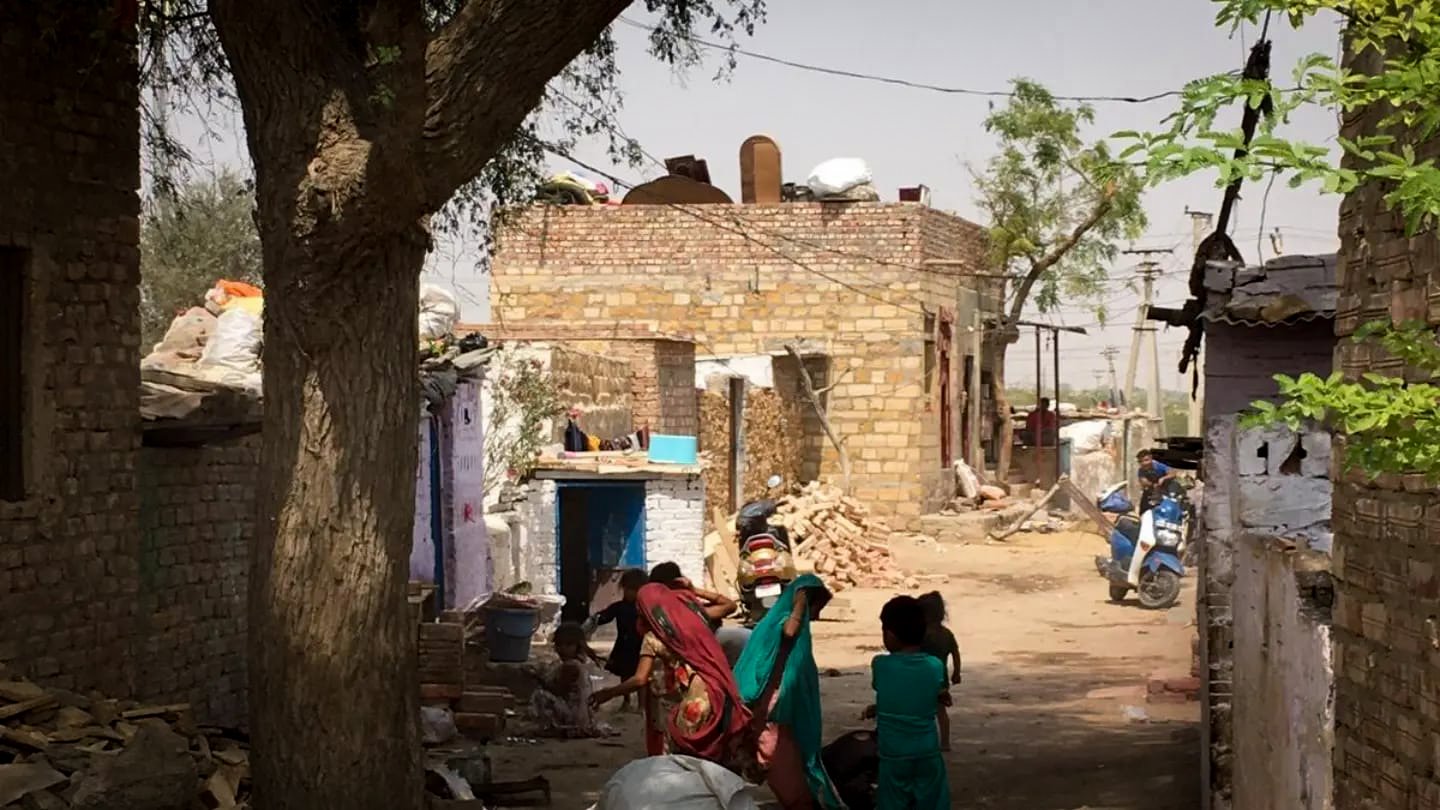

A glaring and varied picture of economic inequality in India is presented by the data on poverty levels in the various Indian states. The problem of poverty has long plagued India, and some areas are still severely affected even after years of efforts. In addition to showing the extent of poverty, the percentages on the map also highlight regional disparities in wealth distribution.
One of the most populous states in India, Uttar Pradesh, has terrible conditions, with 32.1% of its people living on US$ 3.20 (? 270 approx.) or less per day. Although Uttar Pradesh is an important agricultural and industrial centre for India, a sizable section of its people live in poverty. This can be ascribed to inadequate social services, bad governance, and a lack of infrastructure. A cycle of poverty has been sustained, particularly in rural areas, by slow agricultural growth and restricted access to healthcare and education.
Likewise, 23.3% of people in Bihar, another state with a large population, live in poverty. Despite advancements in areas like agriculture and education, Bihar has long been one of the poorest states in India. However, the state's overall economic growth has not been sufficient to lift a sizable section of its population out of poverty. Bihar's low productivity in agriculture and lack of industrialisation are the main causes of the state's high poverty. Moreover, the state's yearly vulnerability to floods and other natural disasters makes matters worse and forces millions of people into ever-deeper poverty.
At 27%, poverty is also a significant problem in Odisha. Despite having an abundance of natural resources and minerals, Odisha has had difficulty transforming its wealth into widespread prosperity. Much of Odisha's population, like that of Bihar, depends on the still-underdeveloped agricultural sector. The industrial and mining sectors have not been inclusive enough to help the economically vulnerable despite their contribution to the state's GDP. Tribal areas of the state, which have been neglected in terms of development for decades, also contribute to the high rates of poverty.
Surprisingly, 34.9% of the people in Maharashtra, one of India's economic superpowers, live on ? 270 or less per day. This number is concerning because Maharashtra is home to some of India's most advanced cities, such as Mumbai, the nation's financial hub. Here, we see the sharp contrast between rural poverty and urban wealth. Although much wealth has been created in metropolitan areas like Mumbai, most is concentrated among a small percentage of the population. Maharashtra's rural areas, where agriculture is still the primary source of income, are still plagued by poverty, droughts, and a lack of infrastructure investment.
West Bengal is another state with a high population density, where 35.2% of people live below the poverty line. Even though the state has improved healthcare and education, its economic development still lags behind other states. Poverty has persisted partly due to the slow rate of industrialisation and the demise of traditional industries like jute. There is now a division between the countryside and urban areas like Kolkata because rural areas, especially those in the state's north and west, have been left behind in the drive for development.
Like many other agrarian states, 26.4% of Rajasthan's population lives below the poverty line. Even with recent improvements in infrastructure and tourism, Rajasthan is still heavily reliant on agriculture, which is regularly impacted by unpredictable monsoon rains. Droughts, poor soil quality, and water scarcity are persistent problems in the desert state that exacerbate its economic difficulties. The state's advancements in other areas, such as urbanisation and renewable energy, have not had enough impact to lift the poverty many rural residents face.
However, states like Tamil Nadu (5.7%) and Kerala (16%) show how progressive social welfare, healthcare, and education policies can dramatically lower poverty. Kerala has a robust healthcare system and high literacy rates and has continuously done well on several human development indices. Its poverty rates are low compared to other states, emphasising how crucial a robust welfare state is to combating poverty. The success of Tamil Nadu, which has the lowest poverty rate at 5.8%, further emphasises how important good governance and industrialisation are in generating jobs and services that help people escape poverty. The development models presented by both states strongly emphasise using human capital to combat inequality and poverty.
Gujarat is a mixed case with a 21.8% share. The state is well-known for its quick economic expansion and industrialisation and has done an excellent job promoting entrepreneurship and creating jobs. However, poverty still exists in some places, especially in rural areas and among marginalised communities, which suggests that growth's advantages have not been shared fairly. Gujarat's emphasis on business and industry has occasionally come at the expense of social development initiatives that could significantly lower poverty.
Relatively lower poverty rates in Delhi and Haryana (14% and 15.7%, respectively) demonstrate the advantages of northern India's urbanisation and economic expansion. As the nation's capital, Delhi has witnessed tremendous advancements in healthcare, education, and infrastructure, all of which have contributed to a decline in poverty. However, there are still problems with income inequality, especially between the wealthy and the less fortunate groups, such as slum dwellers and migrant workers, who find it challenging to make ends meet. Haryana has also profited from economic growth because of its proximity to Delhi and robust agricultural base, but inequalities still exist, especially in rural areas.
An intriguing example is the northeastern states, like Nagaland (12.6%). These states have historically had greater rates of poverty because of their remote locations, inadequate infrastructure, and constrained economic prospects. However, targeted development initiatives, especially through central government programs and heightened focus on regional sectors like tourism and handicrafts, have contributed to a decrease in poverty in recent years. Nagaland's comparatively lower poverty rate demonstrates that focused interventions can make a significant difference even in historically underprivileged areas.
On the other hand, the union territory of Lakshadweep provides an example of how poverty can be virtually eradicated with small, homogeneous populations and well-distributed resources, as evidenced by its remarkably low poverty rate of 0.3%. Due to the territory's small population, steady government assistance, and investments in regional businesses like tourism and fishing, there is little poverty and a high standard of living.
The disparity in poverty rates among these states highlights how difficult it is to combat poverty in a nation with India's diversity. Geographical features, natural resources, governance, and historical development are all important determinants of each state's economic success. Poverty has decreased more successfully in states like Tamil Nadu, Kerala, and Gujarat, which have prioritised infrastructure development, industrialisation, and human capital investment. While this is going on, states like Uttar Pradesh, Bihar, and Odisha have had difficulty pulling sizable segments of their populations out of poverty due to their inadequate infrastructure, restricted access to healthcare and education, and excessive reliance on agriculture.
Therefore, India's strategies for reducing poverty must be customised to meet each state's unique requirements and difficulties. This could entail concentrating on raising agricultural productivity, funding rural infrastructure, and expanding access to healthcare and education for states like Uttar Pradesh and Bihar. In more developed states like Gujarat and Maharashtra, the emphasis may need to change to tackle income inequality and ensure that economic expansion's advantages are shared more fairly.
Furthermore, the fact that many states continue to have high rates of rural poverty emphasises the necessity of giving rural development more attention. The majority of India's population still lives in the rural hinterlands, which are neglected, while urban centres continue to expand and draw investment. The deep-seated poverty in these areas must be addressed through policies that enhance rural infrastructure, increase agricultural productivity, and generate non-farm employment opportunities.
Furthermore, the differences in poverty levels highlight the significance of governance. States like Tamil Nadu and Kerala that have made significant investments in welfare programs have seen a notable decrease in poverty. This implies that although economic expansion is crucial, social policies that guarantee growth advantages are distributed fairly must also be implemented. Social security, healthcare, and education are essential for enabling people to escape poverty and should be prioritised by all national governments.
Finally, India's poverty map illustrates the country's uneven development. While some states have achieved notable progress in lowering poverty, others are still caught in a vicious cycle of hardship. A comprehensive strategy that considers each state's particular difficulties is needed to combat poverty in India. The way forward is obvious, ranging from boosting social welfare programs and addressing income inequality to increasing agricultural productivity and rural infrastructure. Combining inclusive social policies and economic growth is essential to bringing millions of Indians out of poverty and guaranteeing a more equitable future for everybody.